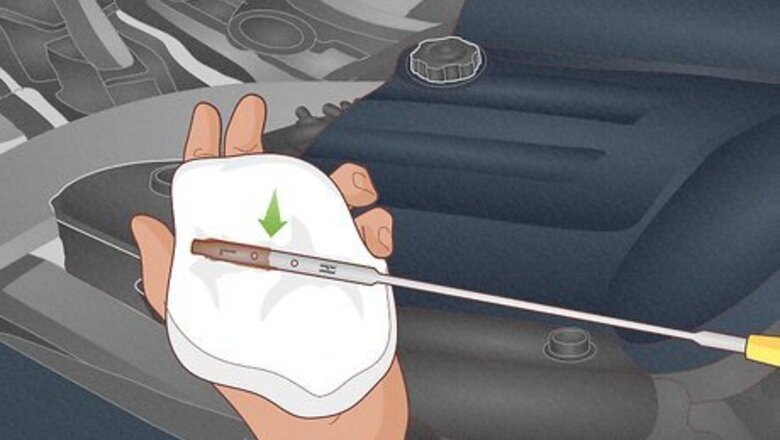
views
- Wipe the dipstick clean with a rag, then plunge it back into its tube and remove it again before examining it to get the most accurate reading.
- Compare the oil level to the markings on the dipstick. If the oil smear on the stick is at or below the lowest marking, it’s time to add some more oil.
- Examine the color of the oil on the dipstick. Clean oil in a healthy engine is amber or brown, while dirty oil is black or has particles floating in it.
Reading a Dipstick

Check where the oil level lands on the dipstick. Remove the dipstick from its holder, wipe it off, then reinsert it and pull it out again. Every dipstick has some sort of marking to indicate your oil level. Some have 2-3 dots, some have the letters L (low) and H (high), the words MIN or MAX, or even just a textured or bent section. Examine the oil streak on the dipstick, and compare it to the locations of the markings. If the streak only reaches to the lowest marking, near the tip of the stick (or even lower), it’s time to top up immediately, otherwise your engine may run hot or even become damaged. If the streak is comfortably between the low and high markings, or is just under the high marking, you’re all good for now, but check back again in a week to make sure it’s still fine. If the oil level is above the maximum mark, you may have a fluid leak that’s causing excess liquid to build up in the oil pan. Take your car to a mechanic to have it checked.
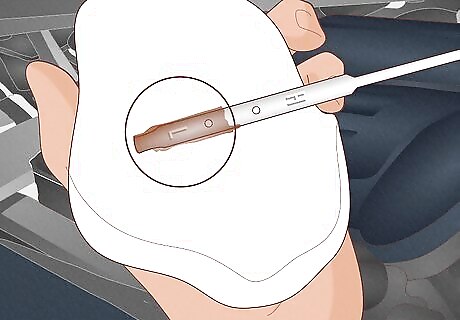
Look at the color of the oil. The color of the oil tells you if it’s time to change your oil altogether. Generally, your oil should have a brown or amber appearance, which indicates clean oil and a healthy engine. If your oil is black, it usually means it’s old or dirty, and it’s time to get it changed within the next couple of weeks to keep your engine running efficiently. If the oil is milky or opaque, you may have a coolant leak. If there are particles within the oil, the engine itself may be damaged. In either case, you’ll at least need an oil change, but also, take your car to a mechanic for a second opinion as soon as possible. Once you’re finished examining the dipstick, place it back into its tube and close the hood.
Checking the Oil in Your Vehicle

Park your car on level ground and let it cool for 10-15 minutes. Park your car somewhere flat for the most accurate reading. Sloped ground can shift the oil’s position within your engine and alter its appearance on the dipstick. Then, wait for the engine block to cool off before you pop the hood, so that you don’t burn yourself on any internal parts, and so the oil can settle in the oil pan. While you wait, check your car’s instruction manual for how to read the oil level. Newer cars may have electronic oil readers rather than dipsticks. In this case, follow your car manual’s instructions. Some manufacturers recommend taking an oil reading while the engine is still slightly warm.
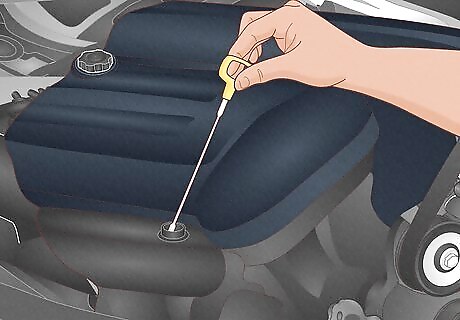
Locate and remove the dipstick from the engine block. Pop your hood (usually by using a lever near your driver’s seat) and find the dipstick handle. This is typically a yellow or orange ring that rests somewhere near the engine. Remove the dipstick by pulling on it until it’s free from the engine block. Consult your owner’s manual for the dipstick’s location on your engine block if you have trouble finding it.
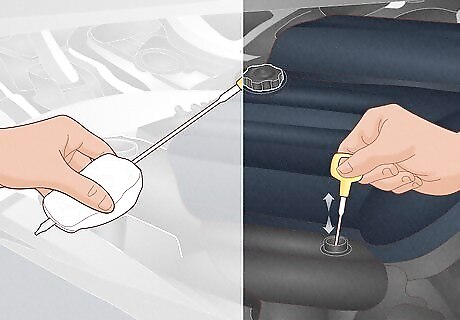
Wipe the dipstick clean, then reinsert it before reading it. Use a paper towel or a spare rag to wipe the oil off of both sides of the dipstick. Then, fully reinsert the dipstick into the tube where you found it, then pull it back out. As your car moves, oil sloshes on the dipstick, so taking a reading without first wiping it clean can provide inaccurate results.
Adding Oil
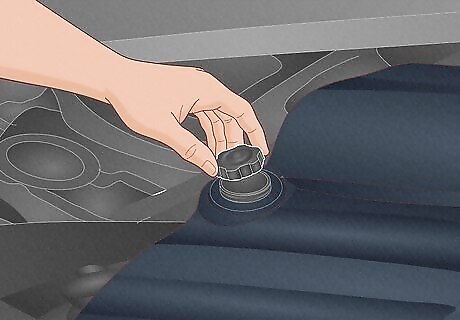
Remove the filler cap on the engine block. If your oil level is low, pop the hood of your car and locate the oil filler cap. This is usually at the top of the engine, and is often marked by an oil spigot symbol. Set the cap aside. If you can’t find the oil filler cap, consult your car’s owner manual for its location. Also, make sure your car is off and the engine is cool.

Add 0.5 US quarts (0.47 L) of oil to the oil fill tube. Use a funnel to add an initial 0.5 US quarts (0.47 L) to the engine block. Use the markings on the side of the oil bottle to tell how much you’re adding, or pour the oil into a disposable measuring cup before adding it to the engine. Consult your car’s owner’s manual or the filler cap for the right kind of oil to add. Usually, this is a figure that looks something like 0W-20 or 5W-30. The W stands for Winter, and is a measure of how the oil flows at 0 °F (−18 °C). The second set of numbers indicates how well it flows at 212 °F (100 °C). Conventional oils are typical, cost-effective, and may be used in most cars. Synthetic oils tend to perform the best, while high-mileage oils are only necessary if you frequently drive long distances.
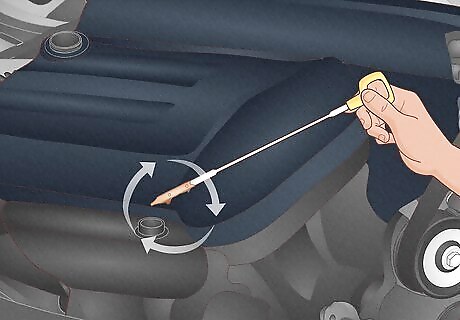
Check the new oil level with the dipstick. Wait 1-2 minutes to let the new oil settle in the pan, then remove the dipstick to see if the new oil level is adequate (but be sure to wipe the dipstick clean first!). The oil level should be between the low and high markings on the stick. If it’s still near or below the low oil marking, add another 0.5 US quarts (0.47 L).
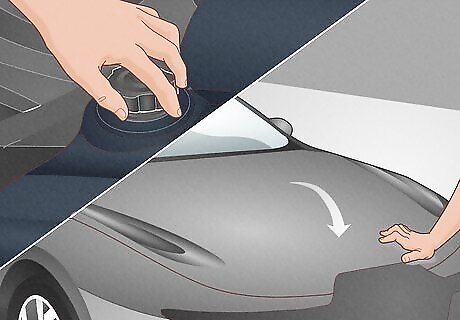
Replace the oil filler cap and lower the hood. Use a spare rag to wipe up any oil you may have spilled, and make sure the filler cap is tightly secured. Now, you’re good to go! Check the dipstick once a month to monitor your oil levels, and add more oil any time it gets low. Be sure to get an oil change every 3,000 miles (4,800 km), or every 3 months, whichever comes first. Newer cars can often go 7,500 miles (12,100 km) or 6-12 months between oil changes.


















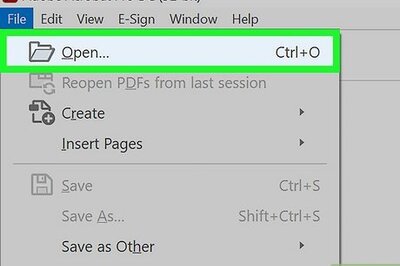
Comments
0 comment